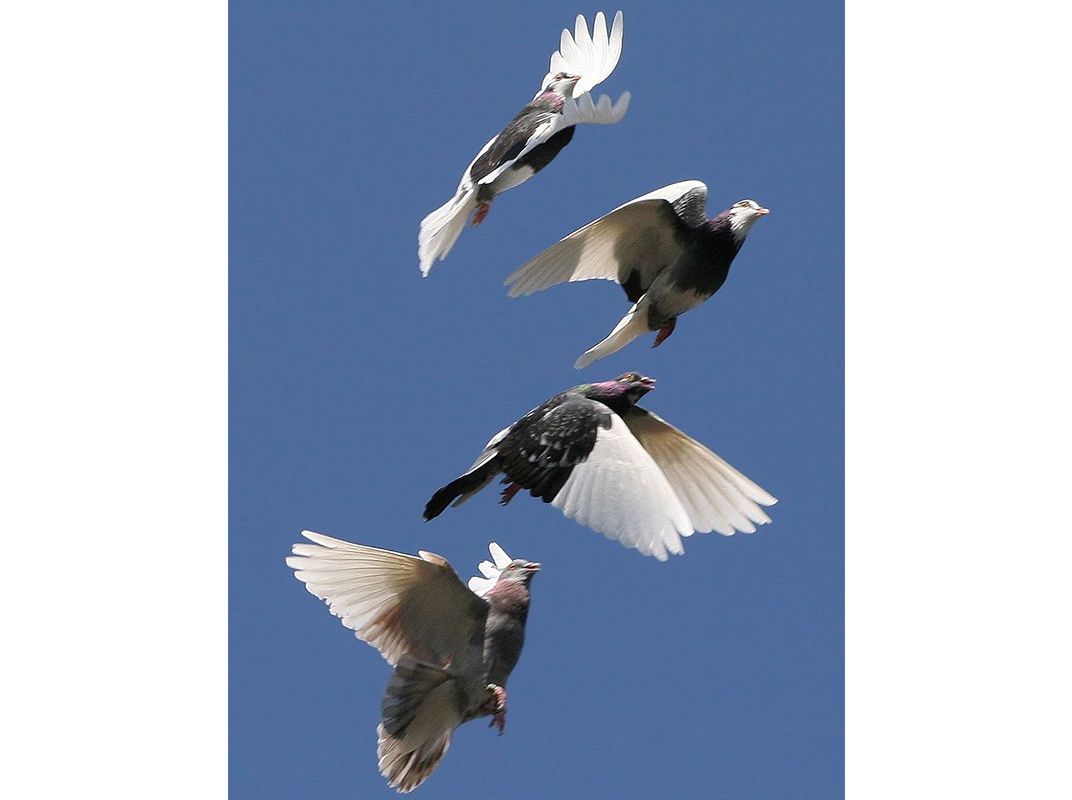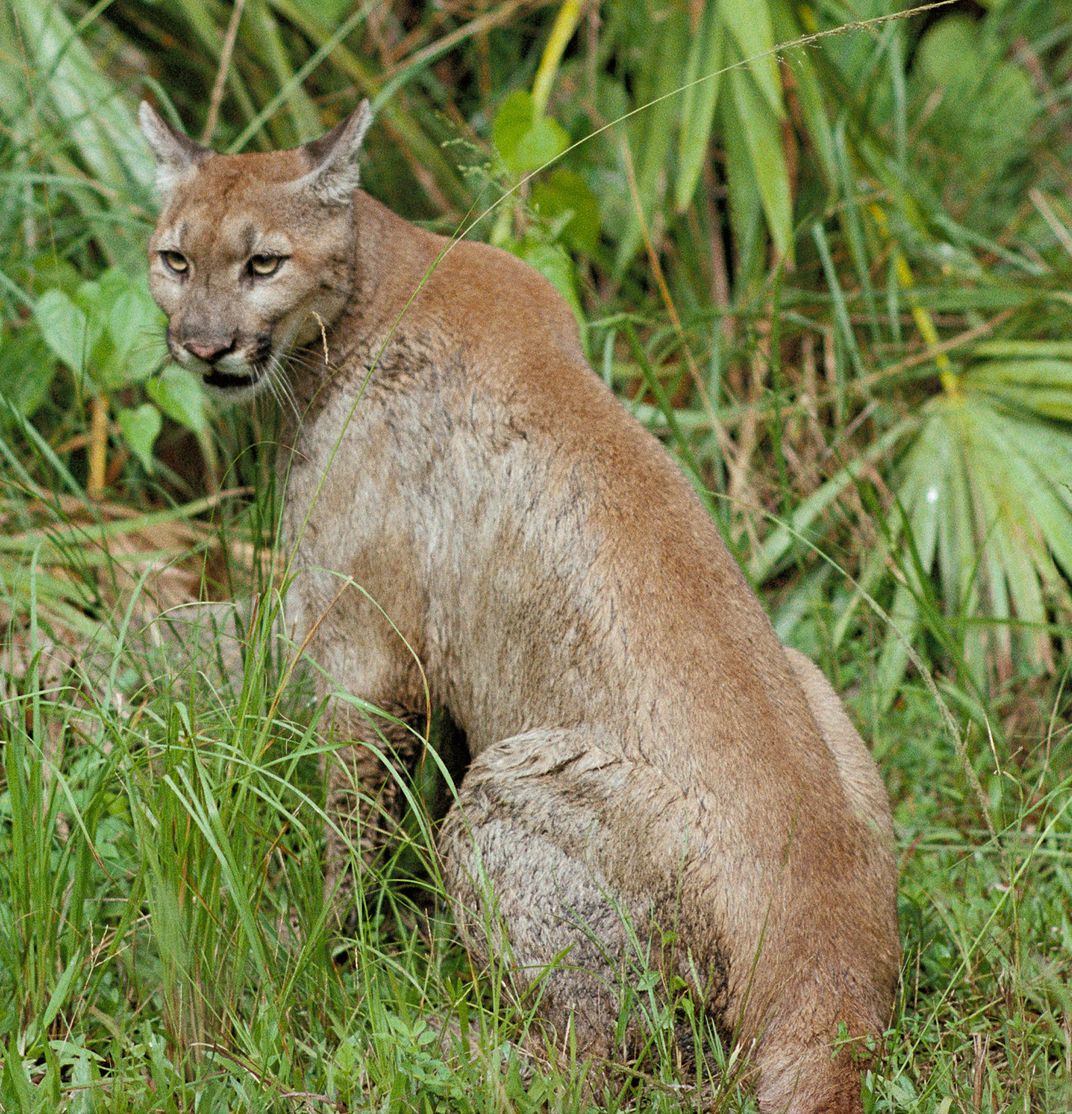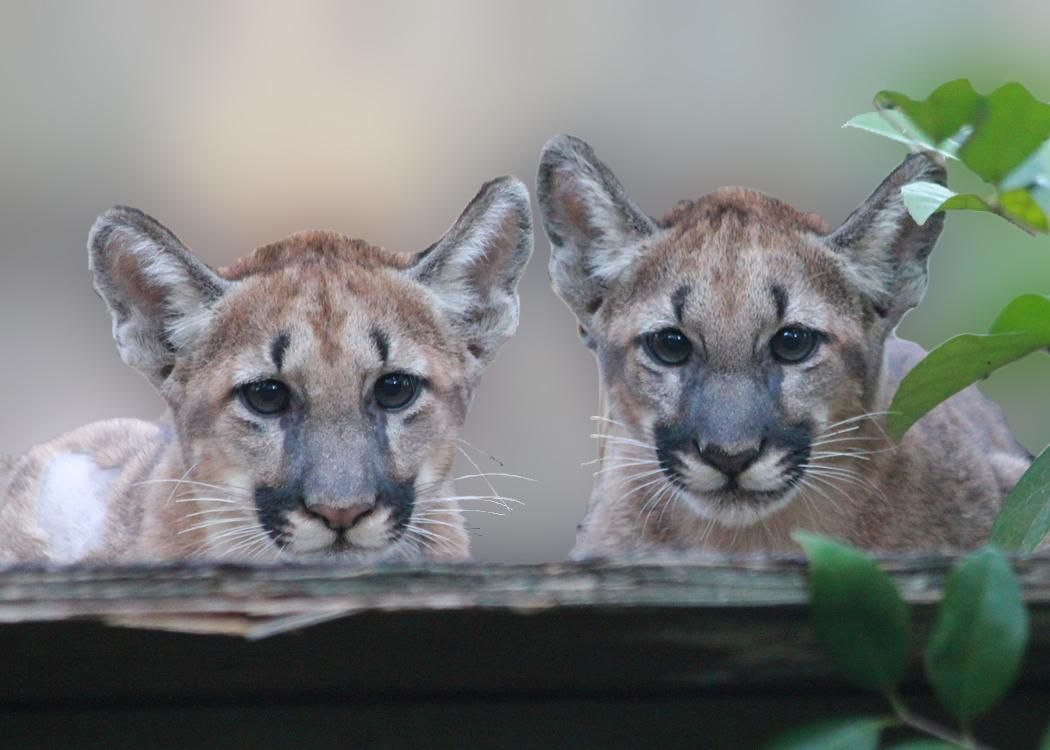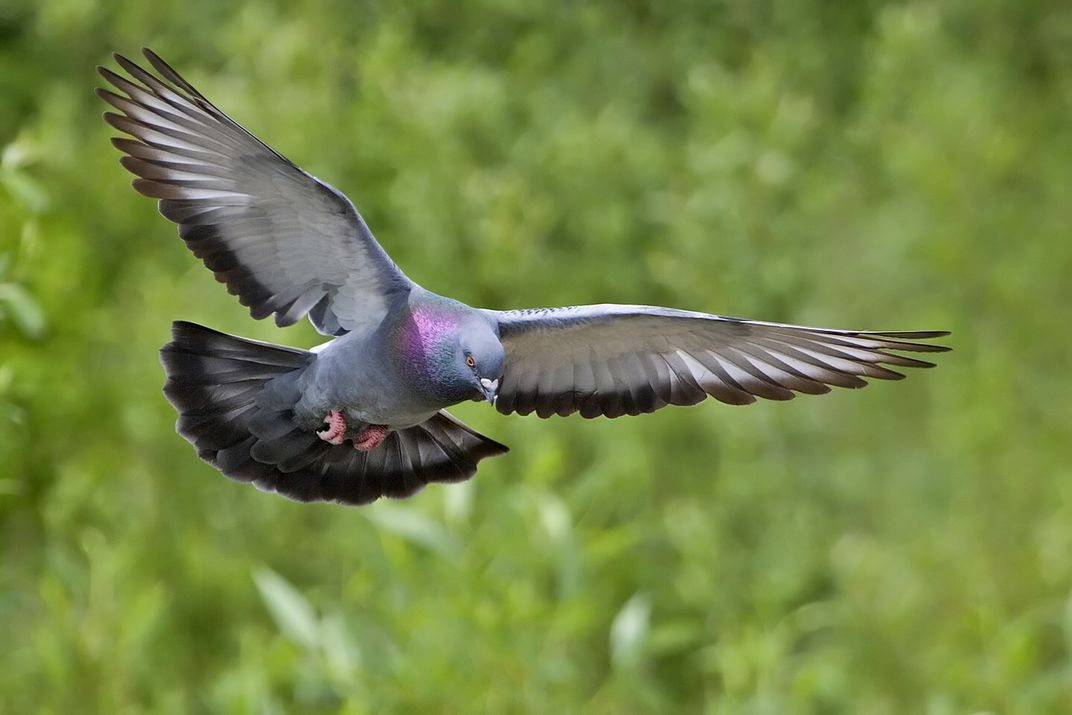Threatened Species? Science to the (Genetic) Rescue!
This still-controversial conservation technique will never be a species’ panacea. But it might provide a crucial stop-gap
/https://tf-cmsv2-smithsonianmag-media.s3.amazonaws.com/filer/0e/e9/0ee98158-4152-4830-ada6-1efd64714272/genetic_rescue_1.jpg)
Like the doomed passenger pigeon in 1914, the pink pigeon of Mauritius is standing on the edge of a precipice. After watching all of its other pigeon cousins on this remote island go extinct—including the dodo, its infamous island-mate last seen in 1662—this rosy-hued bird is now looking down the dark gullet of extinction itself.
After yo-yo’ing down to a population of just around nine individuals in the 1990s, the studly birds are back up to a population of about 400 today. But that number is still small enough to leave them dangerously vulnerable. The pink pigeon’s lack of genetic diversity has left it increasingly susceptible to a parasite-causing disease called trichomonosis, which kills more than half of its chicks and limits population growth.
Fortunately, it isn't 1662 anymore. Today, an evolving conservation tool could help pull these birds back from the brink of extinction: genetic rescue. It works by adding genetic diversity to these kinds of precariously numbered populations—by introducing specific individuals or, potentially, by someday directly editing their genes. If it works, this pigeon’s future may once again be as rosy as its plumage.
“We want to try to give them the tools to fight this disease,” says Camilla Ryan, a graduate student who studies the Mauritius pigeon with genomics researcher Matt Clark at England’s Earlham University. “The birds don’t have the numbers or potentially the genetic diversity to deal with the disease themselves.”
Clark and Ryan are hoping to pull this population back on its feet by pinpointing the genes that make these birds so vulnerable to in the first place. Then, they’ll sample captive pink pigeons in zoos and parks around the world in search of genes better suited to fight the disease, with the ultimate goal of potentially mating these with the wild population. The team has already generated genetic data from 180 different pink pigeons.
Still, the pair remain cautious in implementing a technique that has brewed controversy ever since it started becoming more readily implemented in the 1990s, in hallmark cases of rescuing Florida panthers and Illinois prairie chickens. They aren’t alone: Many conservationists argue that the approach could create unforeseen problems for species at risk, and that it doesn't resolve the underlying problems that push so many species to the brink of extinction, including habitat loss due to human development.
But as humans continue to encroach on wild habitats and alter global climate patterns, the situation for many species has become more dire. Now, many researchers are turning to genetic rescue this as a viable tool to pull these most vulnerable species from the brink of extinction. In the more distant future, some scientists think we might be able to go further, genetically modifying animals to become better suited to their rapidly changing environments.
But let’s not get too ahead of ourselves. For now, scientists are focused on sharpening their genomics tools.

When populations like the pink pigeon’s shrink down to the double or even single digits, they experience something called inbreeding depression. Essentially, that means they have less diversity in their gene pool, which makes it harder for them to beat challenges in their environment. Signs of this have been found in numerous species, including an isolated population of wolves in Michigan where individuals started to develop an unusual arched posture and stubby tails—possible indicators of poor health.
Now, Ryan and Clark are scouring historic tissue samples from five museums across Europe to look for genes that older pink pigeons may have once had to fight off disease before inbreeding depression took hold. The team will then look for captive birds that may have maintained these historic helpful genes to mate them with the wild population.
Sounds fairly straightforward, right? Unfortunately, playing a genetic deity isn’t that simple.
Each genotype you introduce into the existing population comes with its own pros and cons. So the team must be careful not to introduce new problems into the wild birds’ immune systems, says Clark. “You could end up breeding a population that is very successful at fighting off Trichomonas, but what you have done is accidentally decreased the amount of diversity in the immune system,” says Clark.
If that’s the case, he adds, a new disease that they weren’t prepared for could theoretically hit and wipe out the entire population.
Mating captive birds with wild birds also runs the risk of introducing genes that the captive birds had evolved to survive in captivity, weakening the wild bird’s ability to survive in the wild. “By trying to help them out, you’ve made it worse,” Clark says. This threat, called outbreeding depression, raises hackles amongst conservation biologists and is a primary argument against using genetic rescue more widely.

Yet despite these risks, several success stories have shown that genetic rescue can work. One of the major success stories conservationists point to is the Florida panther.
This large, iconic cat once lurked through the southeastern U.S in large numbers, enjoying its status as top predator and vital member of the ecosystem. But by the 1970s, habitat loss and hunting had shrunk the population to between 12 and 20 adults. Not only were their numbers dismal, but almost all of the male panthers showed signs of inbreeding depression, including undescended testicles, kinked tails and low sperm counts.
Conservationists didn’t want to see this cat—which helped keep populations of white-tailed deer, wild hog, and other prey animals in check—go extinct. So in 1995, the U.S. Fish and Wildlife Service worked with a team of researchers to transfer eight female mountain lions from Texas to mate with the Florida panthers. They hoped the mountain lions, which are a subspecies of the panther, would revitalize the gene pool and boost the population size.
Stuart Pimm, a conservation ecologist at Duke University, says he had his doubts at first. If you were trying to rescue a species that had become so rare that it showed genetic damage, he believed, then it was already too late to save them. Many of his colleagues agreed. “You were treating the symptom rather than the cause,” Pimm says, citing habitat loss as the major cause in this case.
But the researchers went ahead, and mated the panthers and the mountain lions. Amazingly, their efforts seemed to work. The panther population grew and the next generation appeared free of kinked tails, undescended tentacles, and other signs of inbreeding. “All of those things disappeared,” says Pimm. Ten years later, Pimm ran a follow-up study showing they had sustained a growing population free of these signs of inbreeding depression.
“It was fast, it was a very effective process,” he says now.
Other success stories popped up in the 1990s. Great prairie chicken populations grew for the first time in decades (though more recent studies question the role of genetic rescue in this success), along with the Swedish adder, a venomous snake that had suffered from inbreeding. Today, Pimm has changed his tune: He now believes genetic rescue can be an excellent tool in a conservationist’s toolbox, and is considering using it to protect other top predators, including lions in Africa.

As researchers around the world consider implementing genetic rescue, they must better understand how the risk of outbreeding depression could differ from species to species. Unfortunately, because genetic rescue has been so controversial, few cases exist that could offer this information.
Even the success stories of the panthers, chickens and adders hold limited information regarding how the mechanism might transfer from one species to another, says Andrew Whiteley, a conservation genomics researcher at the University of Montana. That’s partly because these cases weren’t done systematically—they were more of a last-ditch effort to save a critically endangered species.
“Those were done in response to a pressing management concern, they weren’t really done to test the concept of genetic rescue in an experimentally rigorous way,” says Whiteley. “So those uncertainties are going to remain.”
Working to fill those knowledge gaps, Whitely has been conducting experiments with brook trout—a species easier to experimentally study than large predators—in which his team has moved fish into four different isolated populations and introduced fish from elsewhere to mate with them. Preliminary results suggest that the first round of matings were successful, but the real measure of success will come with the second generation’s ability to survive and reproduce—this is where symptoms of outbreeding depression tend to arise.
He plans to conduct a comprehensive assessment of the second generation’s ability to survive and reproduce, building a so-called pedigree to see how genes flow through the system. “And ultimately dig in with genomics to understand at the genome level what happened when this pulse of gene flow entered this small population,” says Whiteley. “Those are the types of data we need to be able to make solid recommendations.”

If the traditional form of genetic rescue is considered controversial, a newly developing iteration will like start a far louder hullabaloo. Today, biologists are considering literal tinkering with animal genomes, by genetically engineering them to have certain traits.
Robert Fleischer, head of the Center for Conservation Genomics at Smithsonian’s National Zoo & Conservation Biology Institute, is considering this option to make birds in Hawaii resistant to or tolerant of avian malaria, a human-introduced pathogen devastating many Hawaiian bird populations today. But researchers in his group and elsewhere say they are just in the preliminary stages of investigating this technique.
“We are not at the stage of doing any rescuing yet, we are just setting the stage for doing that in the future if it will work out,” says Fleischer.
Oliver Ryder, director of Conservation Genetics at San Diego Zoo Global, says these techniques could someday prove invaluable, but that broader discussions about the ethics and logistics would need to come first. Within those discussions, researchers would need to weigh the risks associated with each case—including the risk that the efforts simply wouldn’t work.
“In spite of the efforts, the pathogen would find a way around the solution or the engineering,” says Ryder, “so all of the effort would not be sufficient to keep the species from going extinct.”
Ryder is involved in a broader effort to develop yet another genetic rescue approach, and is interested in using it to save the Northern White Rhino. The technique, which is still years away, would use stem cell technology to produce eggs and sperm from frozen Northern White Rhinos cells stored at the San Diego Zoo Global. His team is also looking into using frozen sperm to create embryos from eggs obtained either from the last living females or through stem cell techniques. They would then theoretically transfer embryos into closely related rhinos, who would serve as surrogates.
This rhino is the perfect candidate for such an approach, in part because there are only three of these individuals left that are all unable to breed naturally, Ryder says. “The Northern White Rhino is functionally extinct,” says Ryder. “The only way to keep it from going extinct would be to genetically rescue it using advanced genetic and reproductive technologies.”
For now, researchers generally agree that traditional genetic rescue without genetic modification offers the most immediate conservation solution. However, it will never be the end-all solution to saving degrading populations. Instead, it offers a stop-gap opportunity to deal other overlying issues like reducing isolation and improving habitat, says Chris Funk, a researcher at Colorado State University who has conducted studies on Trinidadian guppies to track when and how outbreeding depression may arise.
Funk, like Pimm, at first called himself a skeptic—not because he didn’t believe genetic rescue could work, but because he considered himself a purist when it came to conservation. But as more and more populations become isolated and threatened by increasing human pressures and development, he says he has come to realize that some compromises may be necessary. “There is accumulating evidence that it can work in a lot of circumstances,” says Funk.
“We are not going to have the luxury to have this purist attitude,” he continues. “If we want these populations on the landscape, we are going to have to use genetic rescue to keep them from going extinct.”